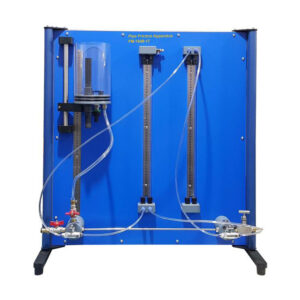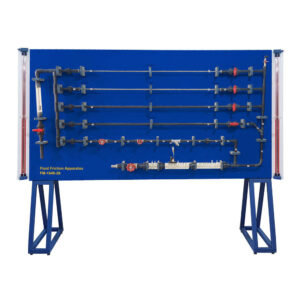Groundwater flows consider, among other things, the extraction of groundwater from wells and excavation pits. An understanding of the hydrological principles of groundwater flow is useful when designing reliable structures such as excavation pits or drainage systems. This apparatus allows three-dimensional investigations of groundwater flows. The trainer consists of a tank with a sand filling. Various models can be placed in the sand bed.
The water is supplied to the tank via two horizontal open-seam tubes that can be activated separately via valves. This results in various experiment possibilities with flowing groundwater. The investigation of various extractions is facilitated by two wells with open-seam tubes, which are also activated individually via valves. Three different models allow the study of excavation pits. At the bottom of the tank there are orthogonally arranged measuring connections to detect groundwater levels. Groundwater levels are displayed on 19 tube manometers.




